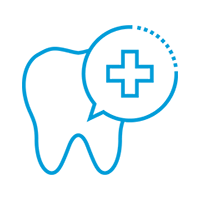Triazolam
Common brand name: Halcion
Description: Triazolam is classified as an antianxiety, sedative and hypnotic drug; it relaxes the patient, makes him or her drowsy and induces sleep. It is closely related to diazepam (Valium) but is shorter-acting.
Dental uses: The main use of triazolam in dentistry is to relax and sedate patients prior to dental procedures and to improve sleep the night before a dental procedure in anxious patients.
Dosages for dental purposes: The typical adult dose is 0.25 milligram right before bedtime the night before the dental procedure to improve sleep, and then 0.25 milligram to 0.50 milligram one hour prior to the dental procedure to relax and sedate the patient.
Concerns and possible side effects: When given by mouth (orally), triazolam and related benzodiazepines (for example, diazepam) are considered a very safe group of antianxiety-sedative-hypnotic drugs. However drowsiness, forgetfulness, impaired thinking and lack of coordination frequently occur. Therefore patients should not operate machinery or drive automobiles for up to 24 hours after taking triazolam.
Occasionally, triazolam may temporarily cause a dry mouth (xerostomia). Patients with narrow-angle glaucoma (increased pressure in the eye) should not take triazolam or related benzodiazepines (ie, diazepam or midazolam) because these drugs can precipitate a glaucoma attack.
Pregnant women should not receive triazolam or related benzodiazepines because these drugs, especially when taken in the first trimester, increase the risk of birth defects.
Patients should not drink alcohol during triazolam therapy. The combination can increase the severity of drowsiness, forgetfulness, impaired thinking and lack of coordination, and possibly lead to unconsciousness.
Certain other drugs may cause triazolam to accumulate in the body and increase the risks of side effects. These include:
The antibiotics erythromycin (Eryc) and clarithromycin (Biaxin)
Azole antifungal drugs such as ketoconazole (Nizoral) and fluconazole (Diflucan)
The ulcer medications cimetidine (Tagamet) and omeprazole (Prilosec)
This list is not complete and it continues to grow. These interactions can be serious, so it is imperative to inform your dentist of all medications you are taking.


